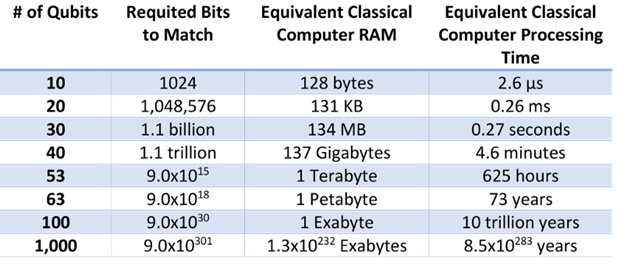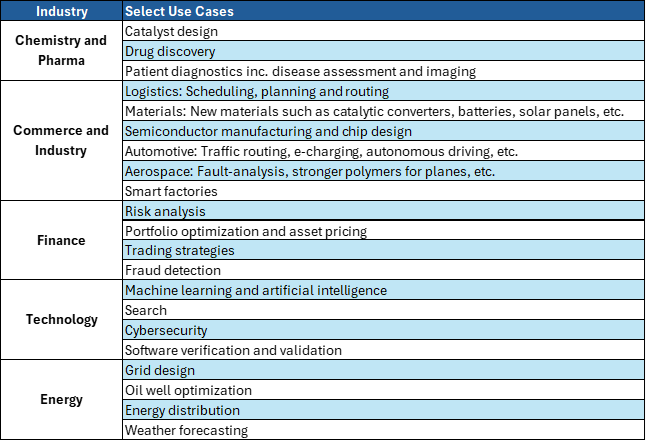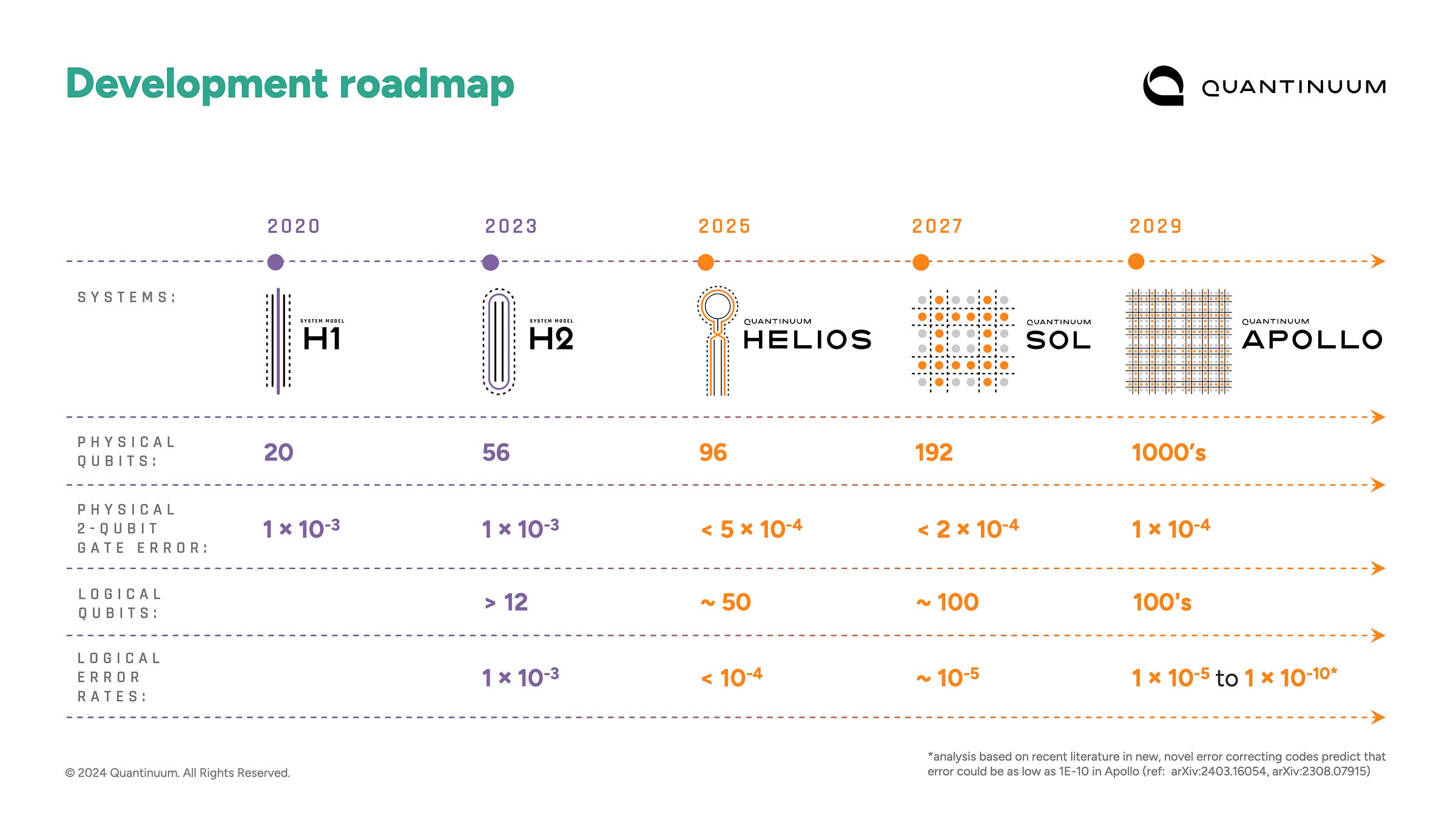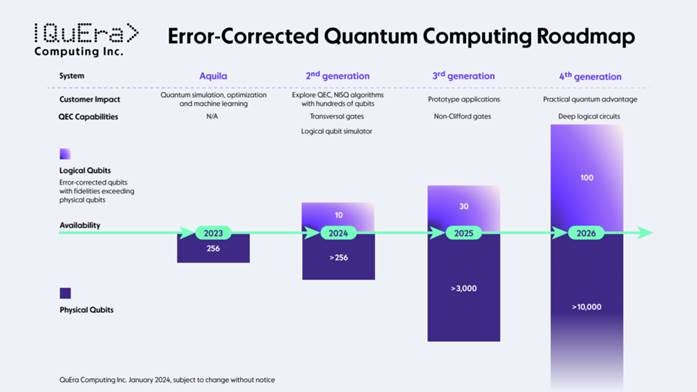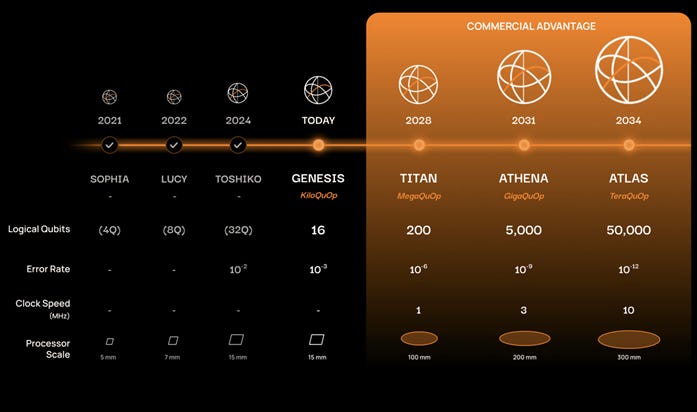The Quantum Leap's Beginner Guide to Logical Qubits
What is a Logical Qubit and how many do we need to achieve commercial quantum advantage?
As some readers may know, I’ve published a series of “Quantum Leap Beginner Guides” to help those that are new to quantum computing learn about some of the fundamentals such as “qubits”, “superposition” and “entanglement” among other concepts, without any math or physics. You can find the series here: Beginner Guides | The Quantum Leap | Russ Fein | Substack.
Last week I published a post about the timeline to commercially useful quantum computers, where I noted that it was “generally understood that once there are 50 or more logical qubits, that classical computers could no longer emulate the results (meaning that after 50 logical qubits, the quantum computer should be able to achieve results that cannot be achieved on a classical computer). “I received several questions about both the 50 logical qubit threshold and what a logical qubit is, so this new “Beginner Guide” will address both.
What is a Logical Qubit?
Classical computers process information using bits, which are simply switches that can be either “on” or “off” and are digitally represented as “1” or “0”. Quantum computers process information using quantum bits or “qubits” which are basic building blocks inside a quantum processor such as superconducting circuits, trapped ions, neutral atoms, photons, or other modalities. These are actual physical devices which also process information as 1’s and 0’s although they can do so taking advantage of quantum mechanical effects such as superposition and entanglement. However, these physical qubits are extremely sensitive to noise and errors from their environment, which means they can lose their information very quickly.
To overcome this fragility, quantum engineers use a clever trick: they combine multiple physical qubits together to create a virtual or logical qubit. A logical qubit is not a single physical thing, but rather an encoded state spread out over a group of physical qubits using error correction encoding. This encoding allows the system to detect and correct errors that might occur on individual physical qubits, making the logical qubit much more robust and reliable for computations. The number of physical qubits needed for each logical qubit depends on how error-prone the hardware is and what sort of encoding program is utilized, but a common current ratio is 9 physical qubits for 1 logical qubit.
While the first Quantum Computer was created in 1998, with two physical qubits, it wasn’t until 2024 that the first logical qubits were realized. In April 2024, Quantinuum, in collaboration with Microsoft, announced 4 logical qubits and by September they had increased that to 12 logical qubits on Quantinuum’s 56-qubit System Model H2. Also in late 2024, via another Microsoft partnership, Atom Computing announced it ran an algorithm using 28 logical qubits. This year, several Quantum Computing companies have published roadmaps with increasing numbers of logical qubits including QuEra (30), Quantinuum (50) and Atom Computing (50), and a few other companies have roadmaps with 100 more logical qubits within two or three years [See Appendix A for select Roadmaps]. Now let’s see why 50 logical qubits represents a tipping point for quantum computing power.
How Many Logical Qubits Do We Need?
Today, we can use classical computers to “emulate” quantum computers, but once there are about 50 perfect qubits, the emulators will struggle to keep up. The following chart helps show why:
You’ll note that at 53 logical qubits, a classical emulator would take 625 hours or nearly a month to complete an equivalent problem. At 63 logical qubits, that jumps to 73 years and once we have 100 logical qubits, it would take much longer than the age of the universe. So, this realm of 50-100 logical qubits suggests uncharted computational territory.
What Types of Problems Will They Solve?
To answer this question, let’s think about certain problems from an intuitive perspective. For example, if you are organizing a party for 6 guests, it is likely you can create a seating chart in your head, without any computational tool, however you may not realize that there are actually 720 different seating combinations for just 6 people. However, if you have, say, 16 guests, the arrangements get a bit more difficult. In fact, with 16 people, there are now more than 20 trillion combinations! This may seem to defy logic, but it’s straightforward and I have a button on my HP 12c calculator (the n! or factorial function) that readily calculates it (I promised no math, but feel free to use your calculators). To be clear, I’m not suggesting we need Quantum Computers to help people with seating charts, but a seating chart represents a typical “combinatorial” challenge. Combinatorial challenges represent the same class of problem as designing new molecules or drugs, where instead of party guests, the variables are atoms and electrons. Here is a chart highlighting different types of combinatorial problems where quantum computers will be most helpful:
The takeaway here is that there are a number of important combinatorial challenges that cannot be efficiently solved with classical computers and where quantum computes could make a significant impact, perhaps as soon as next year.
Summary
In 2024 there was an important milestone achieved with a few Quantum Computing companies creating logical qubits, which overcome many of the challenges facing existing physical qubits and their rapid decoherence caused by various environmental factors. Logical qubits are a form of error correction or resilience to help leverage the potential capabilities of quantum computers. While there remains much debate about when commercial “quantum advantage” will be achieved, we are currently on the cusp of seeing quantum computers with 50-100 logical qubits, which will be able to perform computational tasks out of the reach of existing classical computers. I am excited to see what clever programmers will be able to achieve with this profound new computational power.
Appendix A - Select Quantum Computing Roadmaps
Quantinuum: 50 Logical qubits this year, 100 by 2027
QuEra: 30 Logical qubits this year, 100 by next year
Oxford Quantum Circuits: 16 logical qubits this year, 200 by 2028
Disclosure: The author does not have any business relationship with any company mentioned in this post. The views expressed herein are solely the views of the author and are not necessarily the views of Corporate Fuel Partners or any of its affiliates. Views are not intended to provide, and should not be relied upon for, investment advice.
References:
Jean-Francois Bobier, Matt Langione, Edward Tao and Antoine Gourevitch, “What Happens When “If” Turns to “When” in Quantum Computing”, Boston Consulting Group, July 2021.
“Quantinuum Unveils Accelerated Roadmap to Achieve Universal, Fully Fault-Tolerant Quantum Computing by 2030,” www.quantinuum.com, Sept. 10, 204.
Roadmaps courtesy of the applicable company.




